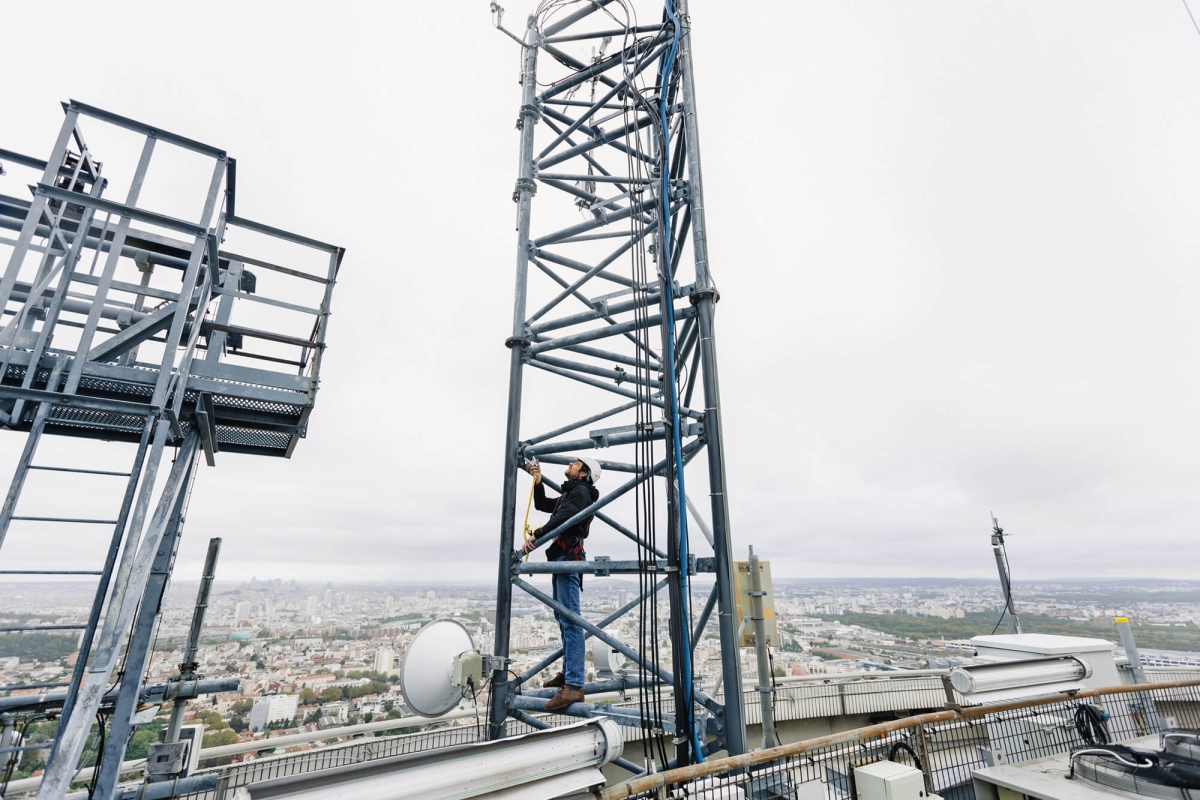
Photo: Pekka Pelkonen, ICOS RI
The installation of atmospheric observation sensors has allowed Paris to more accurately assess the amount of carbon it emits. New data confirms that the French capital’s greenhouse gas emissions have decreased by 25% in the last decade.
Key takeaways
- Verifying climate progress. Paris’s new sensor network confirms that its greenhouse gas emissions have decreased over the past decade.
- A diversified approach provides detailed insights. By using a variety of sophisticated sensors, the city is gaining new insights into seasonal emission patterns and the positive impact of urban forests.
- Real-time data empowers policy. The real-time emissions data is a game-changer for policymakers, allowing them to verify results and design more targeted and effective climate actions.
While emissions inventories offer valuable estimates of emissions-producing activities, their compilation is complex and infrequent – Paris’s city inventory, for example, was last updated in 2022.
“This means that policymakers must base their decisions on outdated data,” says Dr Ke Che, Postdoctoral Researcher at the Laboratory for Climate and Environmental Sciences (LSCE) and part of the ICOS Cities team. “Additionally, these inventories may lack comprehensive information – for instance, some emissions sources may be missing.”
To address this, the team installed a network of greenhouse gas concentration and flux sensors across central Paris, setting up the longest and largest deployment of CO2 sensors over any city.
When combining the new real-time observational data with the emissions inventories, the city authorities get a complete and accurate picture of urban emissions and a reliable foundation for designing targeted mitigation measures.
“This will give us a more accurate estimate of the total emissions in Paris,” Dr Ke says.
“The direct observations also provide a standardised and up-to-date approach that helps improve and validate CO2 emission estimates.”
Mapping CO2 from ground to sky
Starting in 2022, the Paris team deployed the largest number of field measurement techniques out of all the cities in the ICOS project, foregoing low-cost sensors in favour of more sophisticated observation equipment.
To achieve accurate readings, sensors were installed at varying heights across the city, from the semi-forested area of Vincennes to the urban centre of Jussieu. Monitoring equipment was also attached to a tethered balloon in downtown Paris that was capable of ascending up to 300 metres to measure the vertical distribution of atmospheric CO2 concentration. Readings from the urban sites were complemented with measurements from the more rural areas of Saclay, Grignon, and Fontainebleau.
Initially, the team looked at attaching sensors to the city’s churches to take advantage of their height compared to other Parisian buildings, but their historical importance was ultimately a barrier.
“Gaining access to rooftops in strategic locations to install sensors proved to be difficult, as building owners were sometimes sceptical, and it required a lot of negotiation and paperwork to authorise it,” says Olivier Laurent, ICOS Cities researcher at the LSCE.
Despite the challenges, the project team successfully rolled out a comprehensive network of around 50 sensors of different types across the metropolitan region.

Paris' emissions dropped by 25%
Preliminary project findings confirm that the French capital’s greenhouse gas emissions have decreased in the last decade by 25%.
The new data provides further insight into seasonal dynamics, showing that, in the centre of Paris, the winter months tend to see a rise in carbon emissions, with a clear decrease in summer as people leave for the coast or the countryside.
“Urban forests, such as in Vincennes, were also found to be important CO2 sinks, suggesting that the expansion of urban greenery could mitigate urban emissions,” says Dr Laura Bignotti, Postdoctoral Researcher at the French National Research Institute for Agriculture, Food and Environment (INRAE) and part of the ICOS Cities team.
State-of-the-art radiocarbon measurements (14CO2) upwind and downwind of the city further enabled the team to directly estimate the fraction of fossil fuels in Parisian emissions, providing robust data for policy-makers to build their emission reduction plans on.
Based on this vast and unprecedented deployment of observing systems, the Parisian scientific team is seeking to develop more general criteria for installing tailored urban sensor networks worldwide, each customised to a city’s unique emission profile, budgetary limits, size, and density.
“While Paris serves as a case study, our approach is designed to be applicable to other cities as well,” Dr Che concludes.
While Paris serves as a case study, our approach is designed to be applicable to other cities as well.
Dr Ke Che, Postdoctoral Researcher at the Laboratory for Climate and Environmental Sciences (LSCE) and part of the ICOS Cities team
